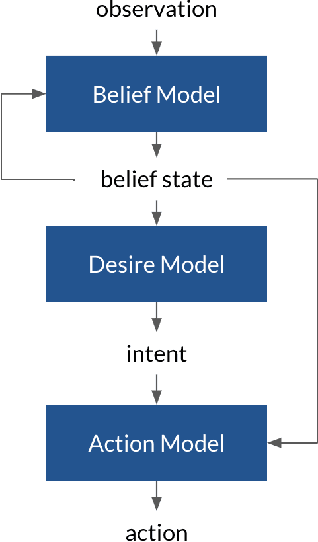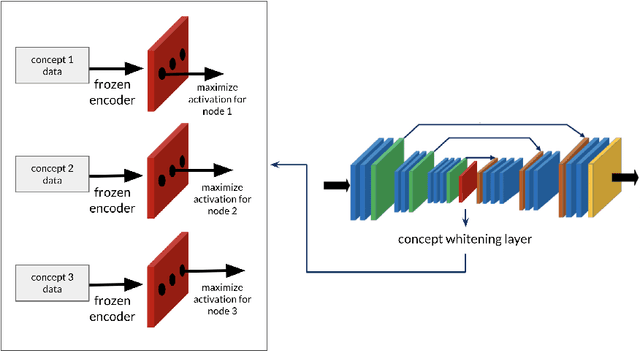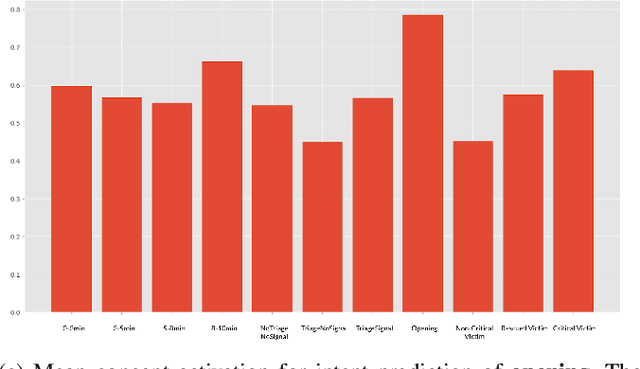Ini Oguntola
Benchmarking and Enhancing Disentanglement in Concept-Residual Models
Nov 30, 2023Abstract:Concept bottleneck models (CBMs) are interpretable models that first predict a set of semantically meaningful features, i.e., concepts, from observations that are subsequently used to condition a downstream task. However, the model's performance strongly depends on the engineered features and can severely suffer from incomplete sets of concepts. Prior works have proposed a side channel -- a residual -- that allows for unconstrained information flow to the downstream task, thus improving model performance but simultaneously introducing information leakage, which is undesirable for interpretability. This work proposes three novel approaches to mitigate information leakage by disentangling concepts and residuals, investigating the critical balance between model performance and interpretability. Through extensive empirical analysis on the CUB, OAI, and CIFAR 100 datasets, we assess the performance of each disentanglement method and provide insights into when they work best. Further, we show how each method impacts the ability to intervene over the concepts and their subsequent impact on task performance.
Theory of Mind as Intrinsic Motivation for Multi-Agent Reinforcement Learning
Jul 18, 2023Abstract:The ability to model the mental states of others is crucial to human social intelligence, and can offer similar benefits to artificial agents with respect to the social dynamics induced in multi-agent settings. We present a method of grounding semantically meaningful, human-interpretable beliefs within policies modeled by deep networks. We then consider the task of 2nd-order belief prediction. We propose that ability of each agent to predict the beliefs of the other agents can be used as an intrinsic reward signal for multi-agent reinforcement learning. Finally, we present preliminary empirical results in a mixed cooperative-competitive environment.
Deep Interpretable Models of Theory of Mind For Human-Agent Teaming
Apr 07, 2021



Abstract:When developing AI systems that interact with humans, it is essential to design both a system that can understand humans, and a system that humans can understand. Most deep network based agent-modeling approaches are 1) not interpretable and 2) only model external behavior, ignoring internal mental states, which potentially limits their capability for assistance, interventions, discovering false beliefs, etc. To this end, we develop an interpretable modular neural framework for modeling the intentions of other observed entities. We demonstrate the efficacy of our approach with experiments on data from human participants on a search and rescue task in Minecraft, and show that incorporating interpretability can significantly increase predictive performance under the right conditions.
SlimNets: An Exploration of Deep Model Compression and Acceleration
Aug 01, 2018



Abstract:Deep neural networks have achieved increasingly accurate results on a wide variety of complex tasks. However, much of this improvement is due to the growing use and availability of computational resources (e.g use of GPUs, more layers, more parameters, etc). Most state-of-the-art deep networks, despite performing well, over-parameterize approximate functions and take a significant amount of time to train. With increased focus on deploying deep neural networks on resource constrained devices like smart phones, there has been a push to evaluate why these models are so resource hungry and how they can be made more efficient. This work evaluates and compares three distinct methods for deep model compression and acceleration: weight pruning, low rank factorization, and knowledge distillation. Comparisons on VGG nets trained on CIFAR10 show that each of the models on their own are effective, but that the true power lies in combining them. We show that by combining pruning and knowledge distillation methods we can create a compressed network 85 times smaller than the original, all while retaining 96% of the original model's accuracy.
 Add to Chrome
Add to Chrome Add to Firefox
Add to Firefox Add to Edge
Add to Edge